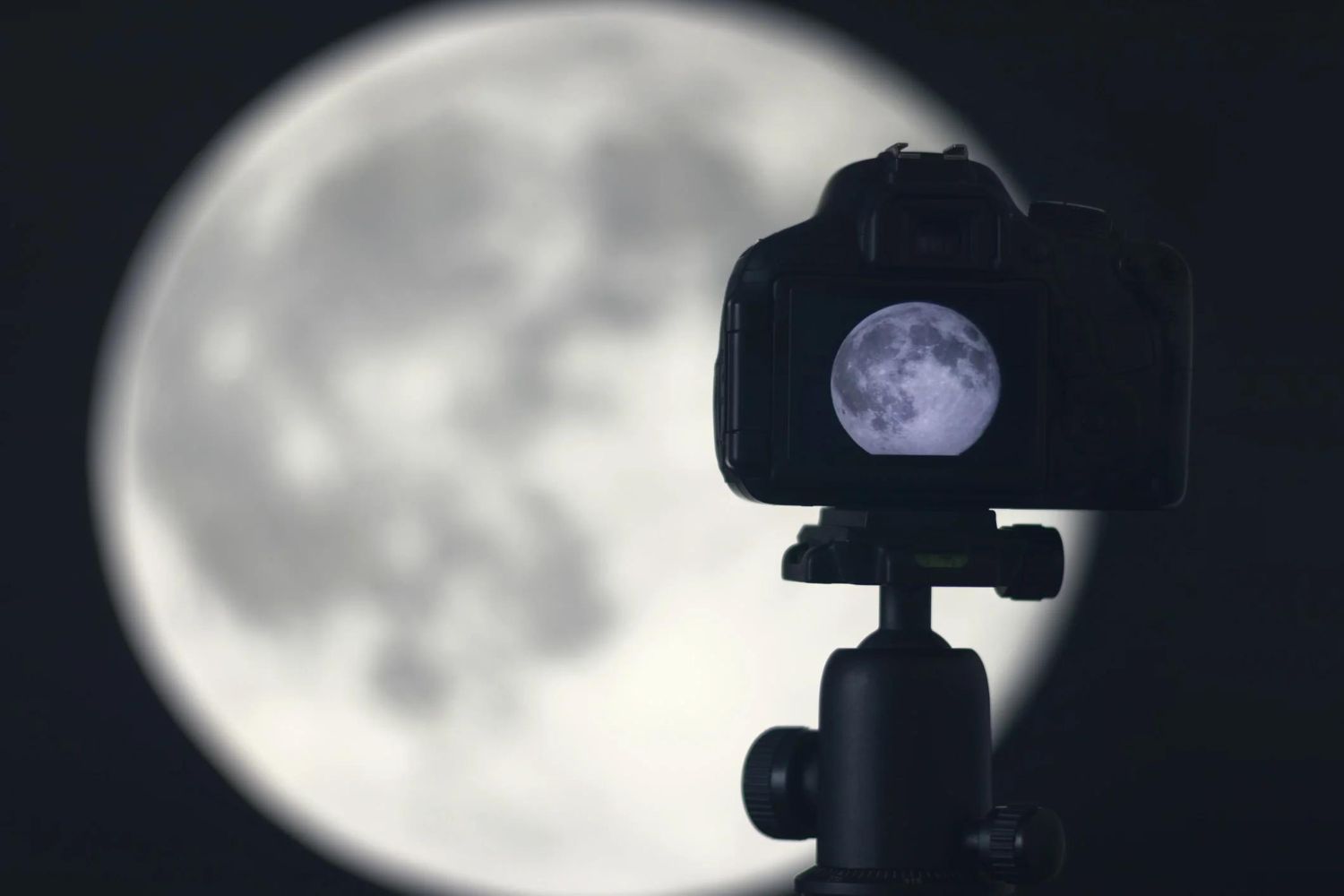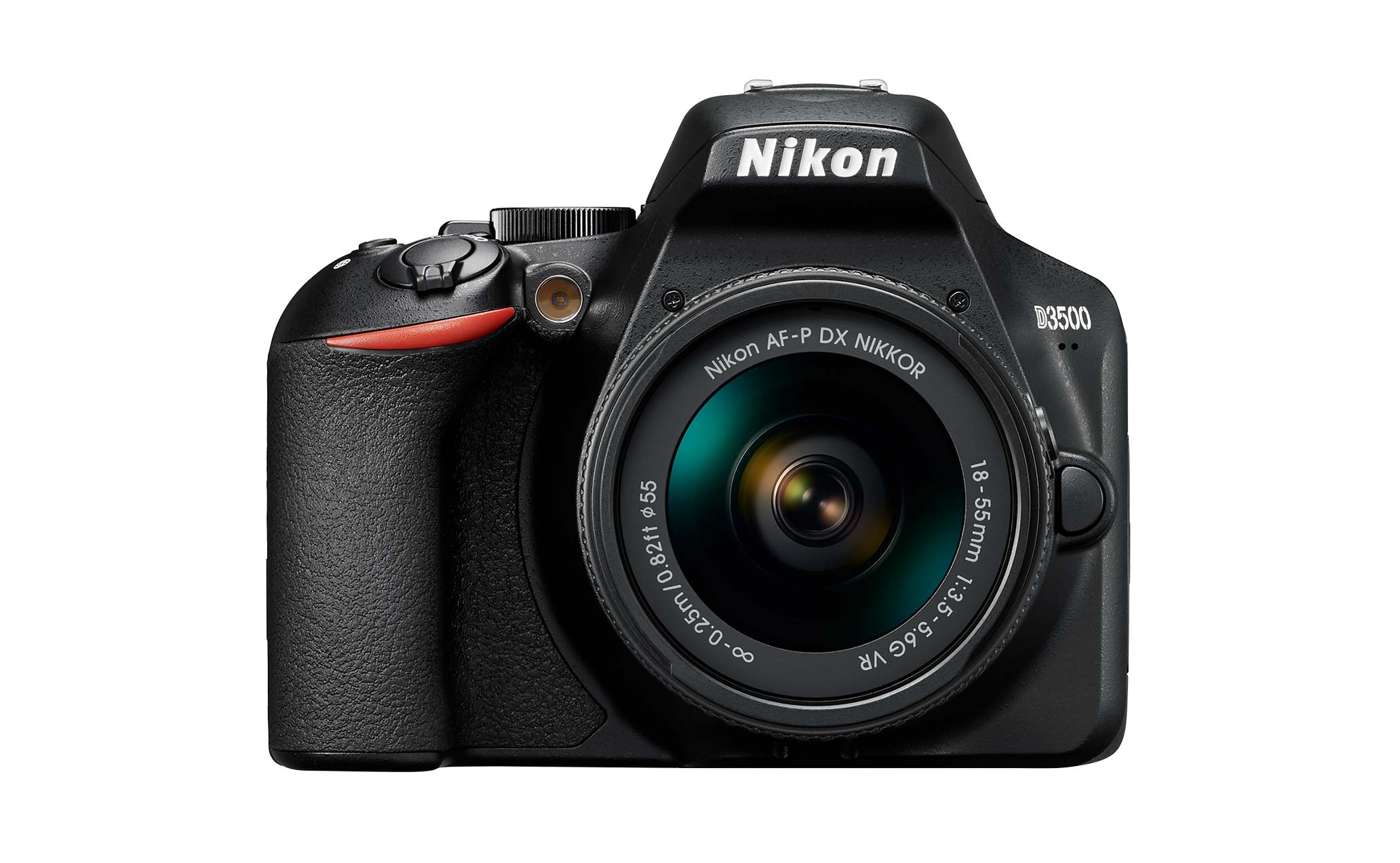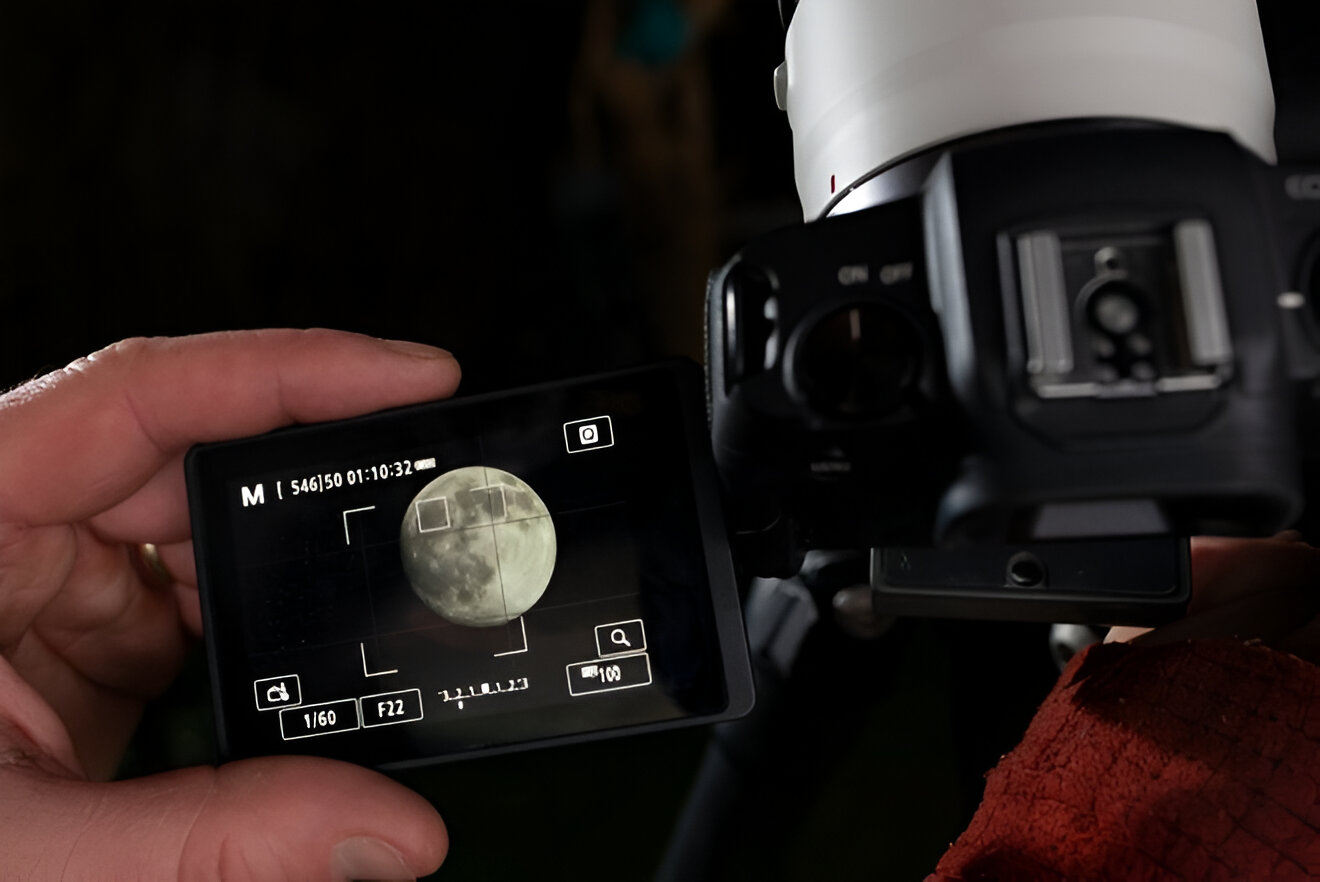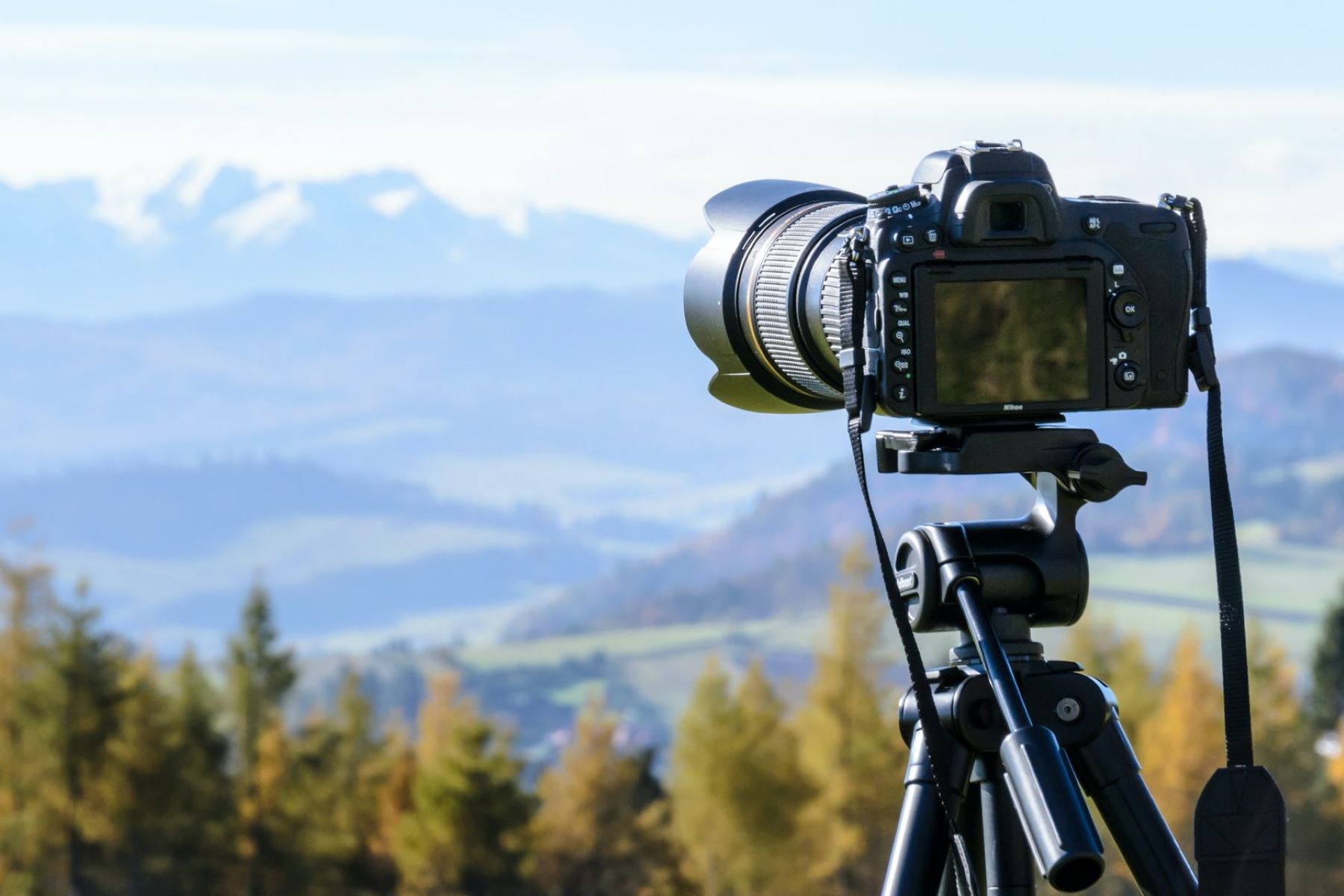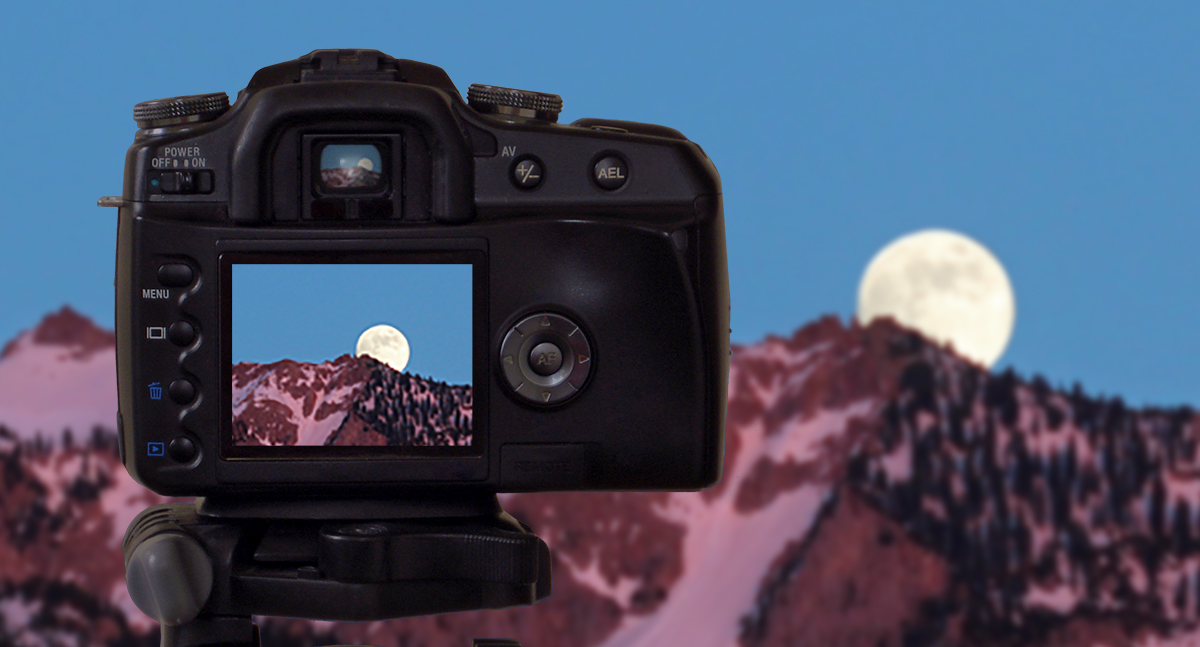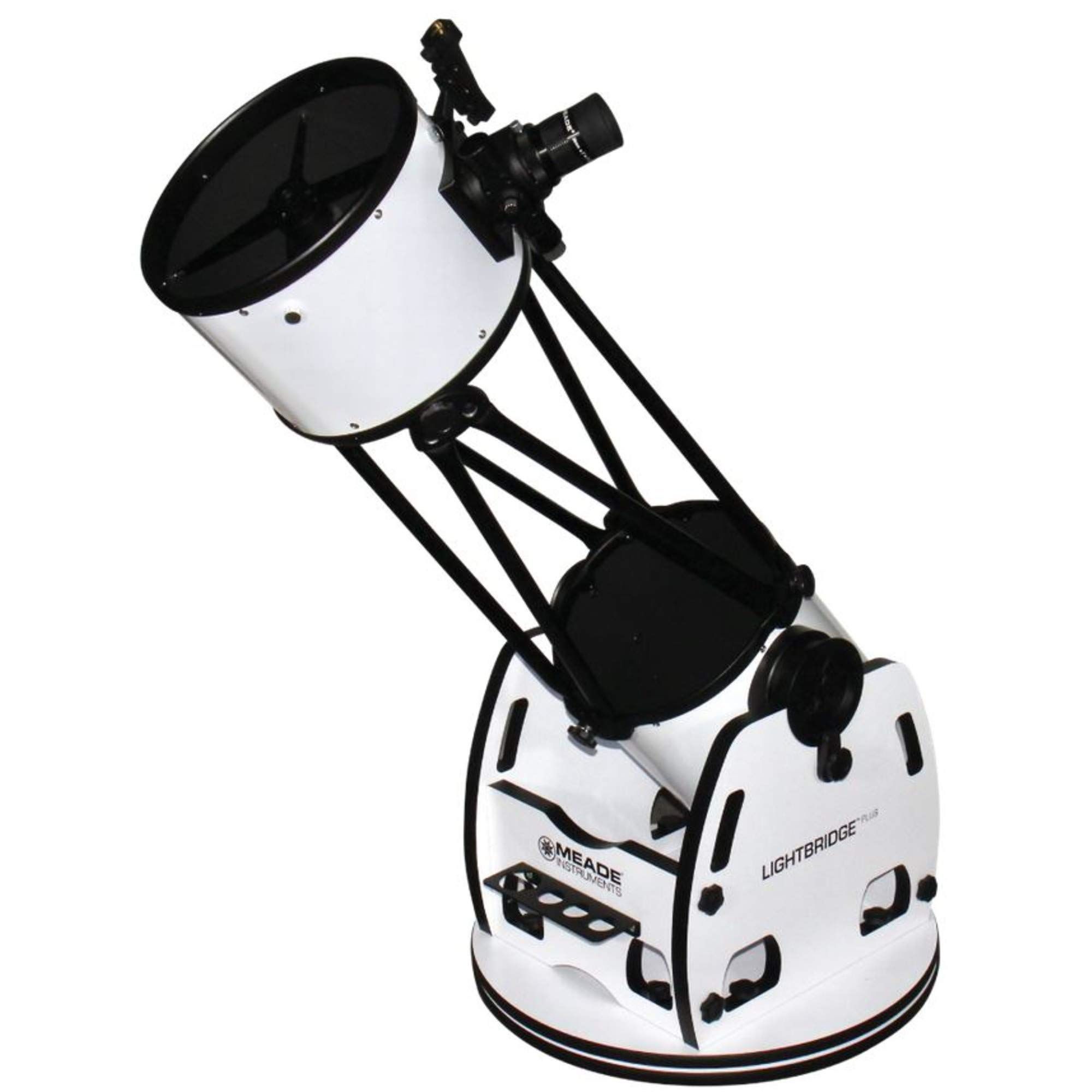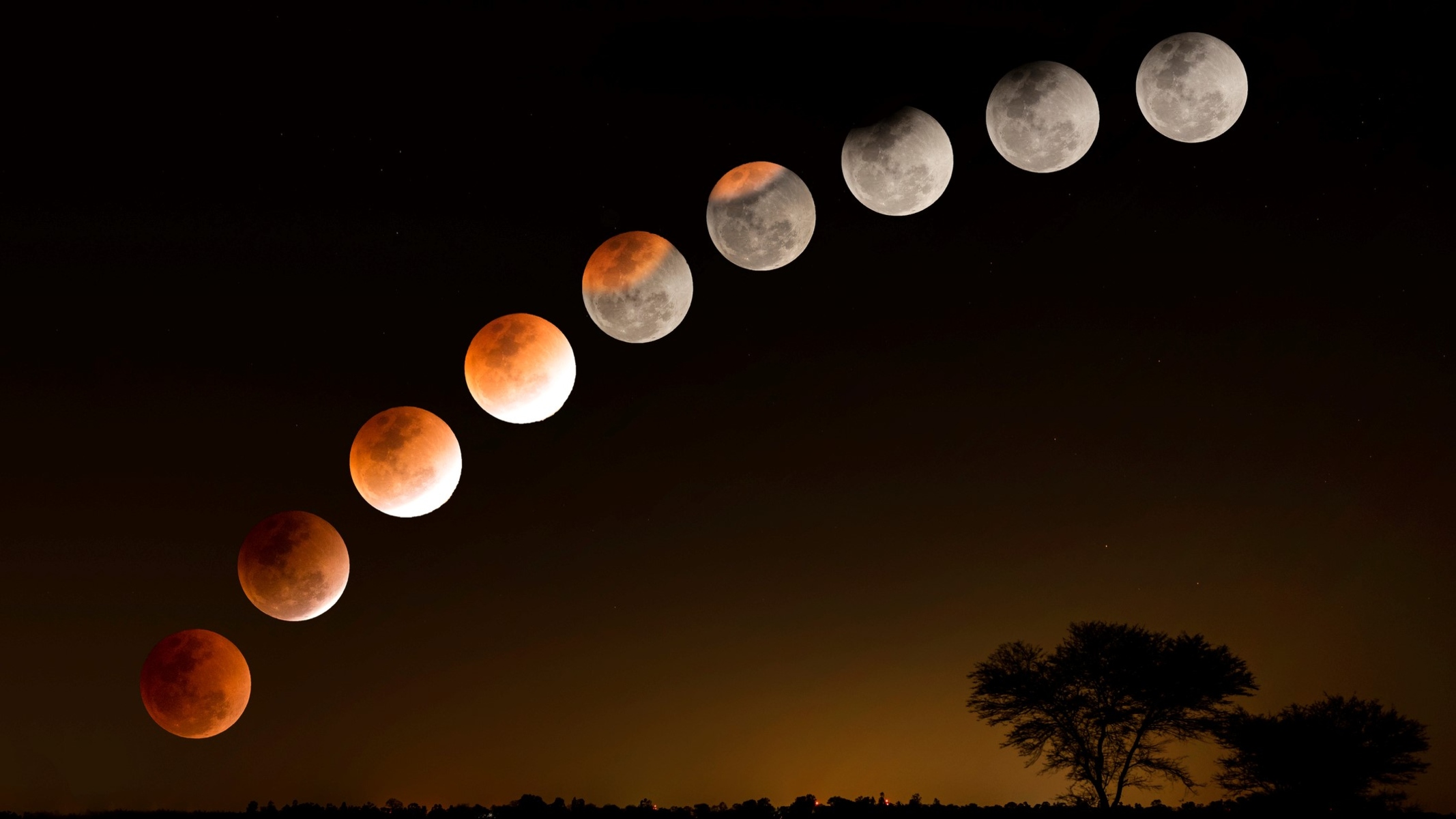Introduction
Are you captivated by the mesmerizing beauty of the moon and eager to capture its allure through the lens of your DSLR camera? Moon photography can be an incredibly rewarding and awe-inspiring endeavor, allowing you to immortalize the celestial wonder in stunning detail. Whether you are an amateur photographer or a seasoned enthusiast, mastering the art of capturing the moon with a DSLR camera requires a blend of technical expertise, creativity, and a deep appreciation for the celestial marvel.
In this comprehensive guide, you will embark on an illuminating journey into the realm of moon photography, learning the essential techniques, equipment, and settings needed to seize the moon's enchanting presence in your photographs. From understanding the basics of moon photography to selecting the ideal equipment, location, and camera settings, this guide will equip you with the knowledge and skills to elevate your moon photography prowess.
Throughout this exploration, you will discover invaluable tips and insights to elevate your moon photography endeavors, enabling you to create captivating and mesmerizing images that reflect the celestial wonder of the moon. So, prepare to embark on an exhilarating photographic odyssey as we unravel the secrets to capturing the moon's ethereal beauty with your DSLR camera.
Understanding the Basics of Moon Photography
Before embarking on your lunar photography expedition, it’s essential to grasp the fundamental principles that underpin the art of capturing the moon with a DSLR camera. Unlike traditional daytime photography, moon photography presents unique challenges and opportunities, necessitating a nuanced approach to achieve spectacular results.
One of the key concepts to comprehend is the interplay between lunar phases and the moon’s appearance. Understanding the lunar cycle and its impact on the moon’s illumination is crucial for planning your photography sessions. Whether you aim to capture the ethereal glow of a full moon, the intricate details of a waxing gibbous moon, or the subtle elegance of a crescent moon, each phase offers distinct photographic possibilities.
Moreover, familiarizing yourself with the moon’s surface features, such as craters, maria, and highlands, can enrich your photographic compositions. By discerning the topographical characteristics of the moon, you can strategically frame your shots to accentuate its captivating textures and contours, adding depth and intrigue to your photographs.
Another fundamental aspect to consider is the influence of ambient light on lunar photography. Unlike daylight scenes, moonlit landscapes and night skies demand a nuanced understanding of exposure and white balance settings to capture the moon’s radiance amidst the surrounding darkness. Balancing these elements is pivotal in achieving well-exposed and visually compelling images of the moon.
Furthermore, comprehending the optical phenomena that accompany moon photography, such as atmospheric distortion and the moon illusion, can guide your approach to capturing the moon’s magnificence with precision and artistry. By delving into these foundational principles, you will lay a solid groundwork for your moon photography pursuits, setting the stage for an enriching and rewarding creative journey.
Choosing the Right Equipment
Equipping yourself with the appropriate gear is pivotal for achieving exceptional results in moon photography. When selecting a DSLR camera for capturing the moon, opt for a model that offers manual exposure control, a range of ISO settings, and the capability to use interchangeable lenses. These features empower you to exercise precise control over your photographic settings, ensuring optimal exposure and sharpness in your moonlit compositions.
Pairing your DSLR camera with a telephoto lens or a dedicated lunar photography lens can significantly enhance your ability to capture the moon’s intricate details with clarity and finesse. A telephoto lens with a focal length of 200mm or greater enables you to magnify the moon’s features, accentuating its mesmerizing allure and rendering its celestial splendor in exquisite detail.
Additionally, investing in a sturdy tripod is indispensable for moon photography, as it provides stability and minimizes camera shake during long exposures. This is particularly crucial when capturing the moon’s resplendence, as even the slightest tremor can compromise the sharpness and clarity of your images. A remote shutter release or a camera with a built-in timer further mitigates the risk of vibration, allowing you to execute precise and steady shots of the moon.
To augment your equipment arsenal, consider incorporating a moon filter into your toolkit. This specialized filter reduces the intensity of the moon’s luminance, enabling you to capture its radiance without overexposure. By attenuating the moon’s brilliance, you can preserve the subtle nuances and textures on its surface, resulting in photographs that exude depth and visual richness.
Moreover, familiarize yourself with the concept of focal length multiplication when using a DSLR camera with a cropped sensor. Understanding how the sensor size affects the effective focal length of your lens is crucial for accurately gauging the magnification and framing of your lunar compositions. By harnessing the potential of the right equipment, you will fortify your capacity to encapsulate the moon’s celestial grandeur through the lens of your DSLR camera.
Selecting the Ideal Location and Time
Choosing the optimal location and timing for your moon photography endeavors is paramount to capturing the celestial splendor of the moon with your DSLR camera. Scouting for a vantage point with minimal light pollution is essential, as it allows the moon’s radiance to shine vividly against a pristine, unobstructed backdrop. Seek out remote or elevated locations, such as countryside vistas or secluded vantage points, to minimize the disruptive influence of artificial light and maximize the clarity of your lunar captures.
When planning your photographic excursions, consider consulting astronomical calendars to identify key lunar events, such as full moons, supermoons, or lunar eclipses. These celestial occurrences present opportune moments to embark on your moon photography pursuits, as they offer heightened visual drama and atmospheric allure. By aligning your photographic outings with these astronomical phenomena, you can infuse your lunar compositions with a captivating sense of cosmic grandeur.
Furthermore, accounting for weather conditions is pivotal in optimizing the visual impact of your moon photography. Clear, cloudless nights provide an ideal canvas for capturing the moon’s resplendence, allowing its luminous presence to radiate with clarity and brilliance. Monitoring weather forecasts and planning your photography sessions during periods of atmospheric stability can significantly elevate the quality and visual impact of your lunar images.
Embracing the interplay between the moon and its surrounding environment can also enrich your photographic narrative. Consider integrating natural elements, such as silhouetted trees, architectural landmarks, or expansive landscapes, into your compositions to imbue them with depth and context. By juxtaposing the moon against these evocative backdrops, you can infuse your photographs with a sense of scale, drama, and visual poetry.
By strategically selecting the ideal location and timing for your moon photography expeditions, you can harness the ethereal allure of the moon to craft evocative and visually arresting compositions that resonate with celestial splendor.
Setting Up Your DSLR Camera
Preparing your DSLR camera for moon photography entails meticulous attention to detail and a nuanced understanding of the technical settings that govern the art of capturing the moon’s celestial radiance. Before commencing your photographic endeavors, ensure that your camera’s firmware is updated to leverage the latest features and performance enhancements, optimizing its capability to render the moon’s resplendent allure with precision and finesse.
When mounting your DSLR camera on a sturdy tripod, secure it firmly to minimize vibrations and ensure stability during long exposures. Engage the camera’s mirror lock-up function, if available, to mitigate internal vibrations that could compromise the sharpness of your lunar images. Additionally, employing a remote shutter release or the camera’s built-in timer enables you to trigger the shutter without physical contact, further reducing the risk of unintended motion and preserving the clarity of your moonlit captures.
Delving into the realm of manual exposure control is fundamental for moon photography. By selecting the manual exposure mode on your DSLR camera, you gain precise authority over crucial settings such as aperture, shutter speed, and ISO sensitivity. Opt for a low ISO setting, such as ISO 100 or 200, to minimize digital noise and maximize the clarity of your lunar images. Balancing this with an optimal aperture setting, typically between f/8 and f/11, ensures a sharp and well-defined portrayal of the moon’s intricate features.
When configuring your camera’s shutter speed for moon photography, strive for a balance between capturing the moon’s luminance and mitigating motion blur. As a general guideline, utilize a faster shutter speed, such as 1/125 to 1/250 seconds, to preserve the intricate details and textures on the moon’s surface. Fine-tune these settings based on the prevailing ambient light and the specific visual narrative you aim to convey through your lunar compositions.
Furthermore, engaging the camera’s live view mode can facilitate precise focusing and composition, allowing you to discern the subtle nuances of the moon’s topography and texture with enhanced clarity. Leveraging the camera’s magnification feature in live view mode enables you to pinpoint and fine-tune the focus on the moon’s captivating details, ensuring that your lunar captures exude sharpness and visual finesse.
By methodically setting up your DSLR camera with meticulous attention to exposure, stability, and focus, you can harness the full potential of your equipment to encapsulate the moon’s celestial grandeur with artistry and precision.
Adjusting Camera Settings for Moon Photography
Mastering the intricacies of camera settings is pivotal in unlocking the full potential of your DSLR for moon photography. As you embark on this celestial odyssey, fine-tuning your camera settings with precision and artistry will empower you to capture the moon’s ethereal allure with breathtaking clarity and detail.
One of the fundamental considerations when adjusting camera settings for moon photography is the white balance. Opting for a daylight or tungsten white balance setting can effectively render the moon’s natural hues with fidelity, imbuing your lunar compositions with a captivating sense of authenticity and visual resonance. By fine-tuning the white balance to harmonize with the moon’s inherent radiance, you can ensure that your photographs encapsulate the celestial splendor in its truest form.
Delving into the realm of exposure compensation is essential for refining the luminance and tonal range of your lunar captures. By judiciously adjusting the exposure compensation to slightly overexpose the moon, you can accentuate its luminous presence and reveal subtle details on its surface. Striking a delicate balance between preserving the moon’s radiance and capturing its intricate features is pivotal in achieving visually compelling and evocative lunar compositions.
Moreover, exploring the potential of long exposure techniques can yield captivating results in moon photography. By extending the exposure duration, you can imbue your lunar captures with a mesmerizing sense of dynamism and atmospheric allure. Experimenting with varying exposure durations, ranging from a few seconds to several minutes, enables you to craft lunar compositions that evoke a sense of ethereal motion and cosmic grandeur.
Engaging the camera’s spot metering mode can facilitate precise and nuanced exposure control, allowing you to gauge the luminance of the moon with pinpoint accuracy. By metering the moon’s radiance against the surrounding night sky, you can fine-tune your exposure settings to achieve optimal tonal gradation and luminosity, ensuring that your lunar compositions exude visual richness and depth.
By deftly adjusting your camera settings, including white balance, exposure compensation, and exposure duration, you can harness the full expressive potential of your DSLR to encapsulate the moon’s celestial grandeur with artistry and finesse.
Using Additional Accessories for Better Results
Enhancing your moon photography endeavors with supplementary accessories can elevate the quality and visual impact of your lunar captures, enabling you to craft evocative and mesmerizing compositions that resonate with celestial splendor. By integrating specialized tools and accessories into your photographic toolkit, you can expand the creative possibilities and technical finesse of your moon photography pursuits.
One indispensable accessory for moon photography is a remote shutter release or cable release. This device allows you to trigger the camera’s shutter without physical contact, minimizing the risk of vibration and ensuring the stability of your lunar captures. By executing precise and vibration-free shots, a remote shutter release empowers you to preserve the clarity and sharpness of the moon’s intricate details, resulting in visually arresting lunar compositions.
Additionally, incorporating a teleconverter into your equipment arsenal can augment the magnification capabilities of your telephoto lens, enabling you to capture the moon’s resplendent allure with enhanced detail and clarity. By multiplying the focal length of your lens, a teleconverter facilitates the close-up portrayal of the moon’s surface features, accentuating its celestial grandeur and rendering its captivating textures with exquisite finesse.
Exploring the potential of a camera lens hood can mitigate lens flare and extraneous light, optimizing the contrast and visual fidelity of your lunar compositions. By shielding the lens from ambient light sources and minimizing stray reflections, a lens hood enables you to capture the moon’s radiance with enhanced clarity and tonal richness, imbuing your lunar images with a captivating sense of depth and luminosity.
Furthermore, integrating a light pollution filter into your photographic toolkit can counteract the disruptive influence of urban and artificial lighting, ensuring that your moonlit captures are imbued with pristine clarity and visual purity. By attenuating the impact of light pollution, this specialized filter allows you to portray the moon’s radiance against a backdrop of unadulterated darkness, accentuating its celestial splendor and evocative allure.
By judiciously leveraging additional accessories such as remote shutter releases, teleconverters, lens hoods, and light pollution filters, you can refine the technical finesse and creative potential of your moon photography endeavors, capturing the celestial wonder of the moon with unparalleled artistry and precision.
Tips for Taking a Stunning Picture of the Moon
Capturing a breathtaking and visually captivating image of the moon with your DSLR camera requires a blend of technical acumen, creative vision, and a deep appreciation for the celestial marvel. To elevate your moon photography prowess and craft evocative lunar compositions, consider the following tips and insights that will enrich your photographic odyssey.
- Optimize Focusing: Prioritize precise manual focusing to capture the intricate details and textures on the moon’s surface. Utilize the camera’s live view mode and magnification feature to fine-tune the focus with meticulous precision, ensuring that your lunar captures exude sharpness and visual finesse.
- Embrace Composition: Explore diverse compositional techniques to infuse your lunar images with depth and visual poetry. Experiment with incorporating silhouetted elements, such as trees or architectural structures, into your compositions to juxtapose the moon against evocative backdrops, adding scale and narrative intrigue to your captures.
- Utilize Bracketing: Employ exposure bracketing to capture a series of exposures at varying settings, enabling you to refine the tonal range and luminosity of your lunar compositions. This technique empowers you to select the optimal exposure during post-processing, ensuring that your moonlit captures exude visual richness and tonal depth.
- Monitor Atmospheric Conditions: Stay attuned to weather forecasts and atmospheric stability when planning your moon photography sessions. Clear, cloudless nights provide an ideal canvas for capturing the moon’s resplendence, allowing its luminous presence to radiate with clarity and brilliance.
- Experiment with Long Exposures: Explore the creative potential of long exposure techniques to infuse your lunar captures with a mesmerizing sense of dynamism and atmospheric allure. Experiment with varying exposure durations to craft compositions that evoke a compelling sense of ethereal motion and cosmic grandeur.
- Integrate Natural Elements: Consider incorporating natural elements, such as bodies of water or rugged landscapes, into your lunar compositions to imbue them with a sense of context and visual narrative. By juxtaposing the moon against these evocative backdrops, you can evoke a profound sense of scale and cosmic grandeur in your captures.
- Embrace Creativity: Dare to experiment with unconventional perspectives and angles to capture the moon’s resplendence in innovative and visually arresting ways. By embracing creative experimentation, you can infuse your lunar compositions with a captivating sense of artistry and individuality.
By integrating these tips and techniques into your moon photography repertoire, you can imbue your lunar captures with a mesmerizing sense of artistry and cosmic grandeur, crafting visually compelling images that resonate with the celestial wonder of the moon.
Conclusion
Embarking on the enchanting journey of moon photography with a DSLR camera opens a gateway to capturing the celestial wonder of the moon with unparalleled artistry and precision. By delving into the nuances of lunar phases, refining your camera settings, and integrating supplementary accessories, you can elevate your moon photography prowess and craft evocative compositions that resonate with cosmic grandeur.
Throughout this comprehensive guide, you have gleaned invaluable insights and techniques to optimize your moon photography endeavors, from selecting the ideal equipment and location to fine-tuning exposure settings and embracing creative composition. By harnessing the interplay of technical finesse and creative vision, you can encapsulate the moon’s ethereal allure in visually compelling and emotionally resonant compositions.
As you venture forth on your lunar odyssey, remember to embrace the art of experimentation and creativity, daring to explore unconventional perspectives and innovative techniques to capture the moon’s resplendence in ways that transcend the ordinary. By infusing your lunar compositions with a sense of narrative intrigue and visual poetry, you can evoke a profound sense of wonder and cosmic splendor in your moonlit captures.
So, as you train your lens on the celestial beacon that graces the night sky, allow your passion for moon photography to kindle a sense of awe and reverence for the celestial marvel that has captivated humanity for eons. With each click of the shutter, you immortalize the timeless allure of the moon, weaving a visual tapestry of cosmic beauty that transcends the boundaries of time and space.
May your moon photography pursuits be imbued with creativity, technical finesse, and an unwavering sense of wonder, as you navigate the celestial realms to capture the moon’s resplendent radiance with your DSLR camera.







